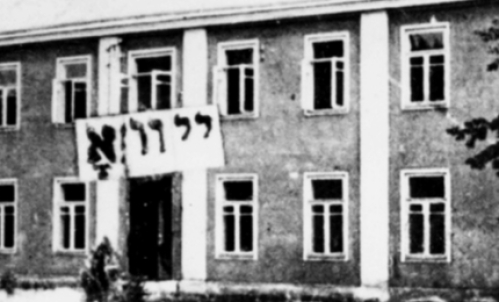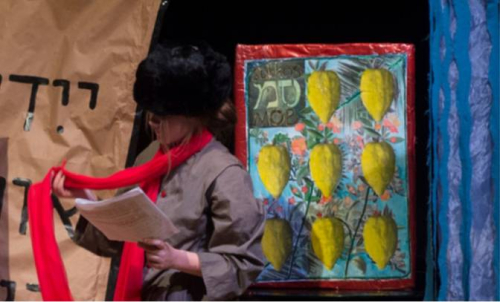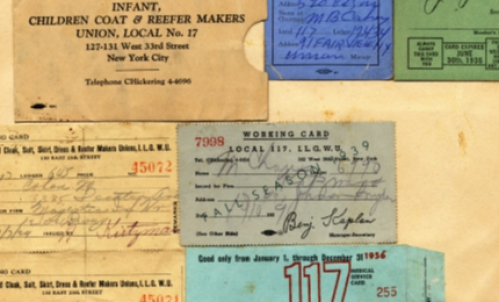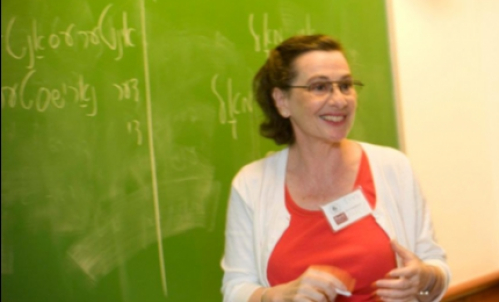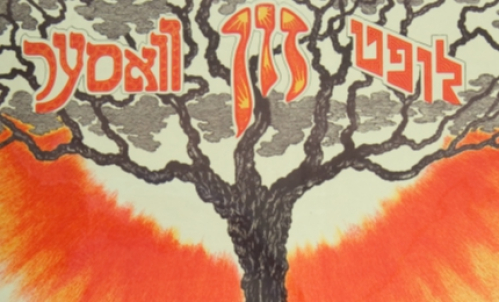On Monday, October 21, 2013, YIVO and the Center for Jewish History will host Sex, Yiddish and the Law: Jewish Life in Metz in the 18th Century, in conjunction with an exhibition, a conference and two other public programs celebrating the pinkas (register) of the bet din (rabbinic court) of the Jewish community of Metz, France, two leather-bound volumes preserved in the YIVO Archives. Brimming with details of commercial transactions involving Jews and non-Jews, family law, inheritance, modes of jurisprudence, and recourse to civil courts, the pinkas is a monument to an extraordinary community and its remarkable rabbinical court.
 Professor Jay Berkovitz
Professor Jay BerkovitzVisit the exhibition and symposium website and buy tickets to the events.
Professor Jay Berkovitz of the University of Massachusetts is the author of the upcoming book, Protocols of Justice: The Pinkas of the Metz Rabbinic Court 1771-1789 (Brill), a transcription and annotations of the 400,000-word document.
On September 9, he sat down with Yedies Editor Roberta Newman to talk about the pinkas. This interview is the second in a three-part series.
RN: The pinkas is written in Hebrew so how does Yiddish enter the picture?
JB: The language that the Jews of Metz spoke day to day was undoubtedly Yiddish. And one can presume that the actual cases of the bet din were conducted in Yiddish. There is a rabbinic convention to record court cases, and especially legal material, in Hebrew. It gives it a greater reach, universally, and also it’s a more classic way of chronicling and recording. But at the same time, assuming that the community was speaking Yiddish and the cases were conducted in Yiddish, we can then assume that the testimony was given in Yiddish. In fact, there are a number of cases that include direct testimony, where we can tell from the language that this is a quotation and not simply a paraphrase. In quite a number of cases, that testimony is recorded in Yiddish. So we have Yiddish in the pinkas. We have many, many Yiddish words, by the way, in other case records, such as words for various objects and belongings, especially those listed in inventories.
RN: Where there is no equivalent word in rabbinical Hebrew?
JB: Not only that, but perhaps when the object was best known by that name. Sometimes the French word is used, sometimes the German is used, and very often Yiddish is used. There are at least 150 Yiddish terms that appear in the pinkas. Direct testimony in Yiddish occurs perhaps a dozen times in the pinkas, and strangely, I discovered that quite a large percentage of those Yiddish testimonies are part of paternity and sexual harassment cases. Today, we’d call them accusations of rape. So it is interesting that for one reason or another, those kinds of cases are recorded in their original language. Perhaps it was because it would give the reader a greater sense of just what exactly the nuances were in terms of the relationship between the young man and the young woman, or more of the nature of the accusation, or whatever.
I’ve found roughly thirty accusations of paternity, which represents about 3 percent of the total number of cases that came before the bet din, which is a pretty large percentage, considering that most of the cases are about recovery of debt and so forth. Very often, the accused father is the fiancé of the young woman and sometimes this is an attempt to make sure that he follows through on his promise to marry her. Other times, the accusations are between a servant girl and a master or the son of the master of the home. But, very interestingly, the bet din will almost never have direct evidence. It’s all basically “he said, she said.” And the question is, how do you construct a mechanism for who is telling the truth in the face of circumstantial evidence? The bet din is very thorough in its investigation, makes every effort it can to solicit from anyone who has more information or any details about what was observed, about the nature of the relationship between the young man and the young woman, or whether this woman behaved in a way that may have invited other men to be involved with her, and whether he was reliable and honest, and so forth. So every case is different. There’s no boilerplate case that one could point to, to say that this is the way it was.
RN: So this isn’t really dry reading material, is it? You get a look at the quite intimate details of life.
JB: Yes, and also about the way that money functioned in society and culture, the way that men and women related to each other, not just around sex, but also around money. Very interesting observations arise from this about the way husband and wife functioned as an economic unit and about divisions of property. All of these things are the nuts and bolts of the study but they represent, at the same time, a kind of an entrée into the study of human nature in the eighteenthcentury.
Interview edited for length and clarity.
Visit the exhibition website.
